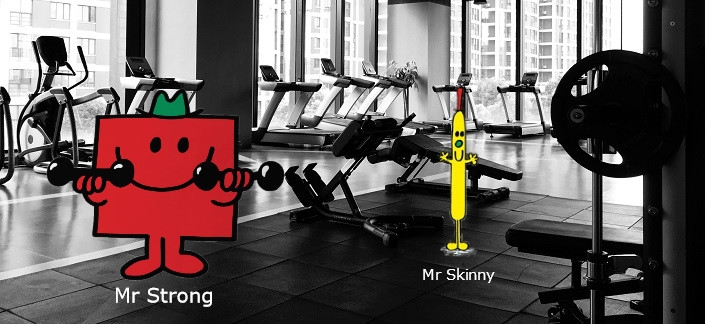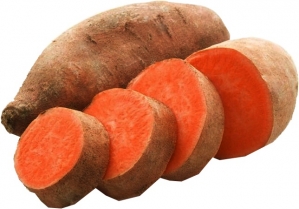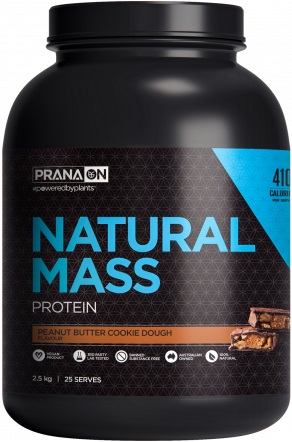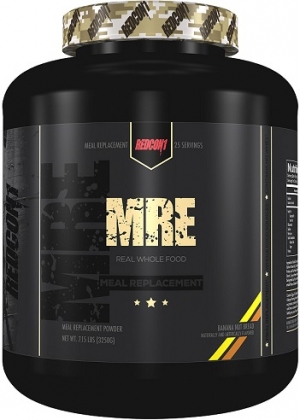Best Weight Gain Supplements for Skinny Guys (and Gals)

The jury’s in.
You’re skinny.
And odds are, you’re looking to pack on some pounds and fill out some seriously baggy clothing.
You’ve certainly come to the right place, as we’re going to cover all things weight-grain related and show you how to start tipping the scales in your favour.
Maybe you’re young and have a fast metabolism.
Perhaps you work a lot with little time to eat or have done a little too much partying.
Whatever the reason, weight gain doesn’t have to be hard. Though it does take a common sense approach.

You will need to be ready to discard some old beliefs regarding food, supplements, exercise and lifestyle that are holding you back.
The weight gain industry is packed with all kinds of mass gains powders that claim to trigger growth and strength.
So how do we know what approach works and what doesn’t.
Is it as simple as jamming as many high-calorie shakes down as is humanely possible?

After all, a calorie is a calorie whether it’s found in a highly processed dextrose granule or organic roasted sweet potato.
But the difference between a calorie that is backing your long-term health and one that isn’t can be so vast as to be immeasurable.
Ultimately, the question all skinny guys and gals should be asking is how much weight do I want to gain?
And for how long am I willing to commit to regular exercise?
The trouble skinny guys (and gals) fall into is the short-term fad diets designed to stack on mass extremely quick.
This typically involves eating everything in sight as often as possible and chugging down high calorie shakes between meals that are so thick you can stand a spoon up in them.
Sure, you will most likely pack on a lot of weight doing this. Though this approach is wrought with trouble and takes a toll on overall health.

For instance, the weight gained may be mostly fluid and body fat, with very little muscle gain. And your overall health will take a significant downturn, putting you at a higher risk for illness.
For the thin, gradually increasing bodyweight with a combination of a quality diet, containing abundant nutrient dense healthy fats, bioavailable proteins and low glycemic index carbohydrates, is the ultimate goal.
To achieve this, you have to let go of the I want it now mentality and commit yourself to a program that will not only put size on but also enhance your health in the long term.

In addition to a quality diet, regular bodybuilding-style training is ideal to help you create muscle bulk (which is heavy), focusing on larger muscle groups such as the back, thighs, glutes and chest.
Why these muscle groups?
Because they’re big.
And when they grow, you get heavier faster.
Why not strength training?
Because this style of training tends to deliver more strength and power than muscle size.
And you want to bulk up, right?
Don’t worry, you will still get stronger on a bodybuilding style of training, just not to the degree that strength training will deliver.
Throw in quality sleep (8-9 hours) and supplements that nourish you whilst helping you stay in a positive calorie intake, with plenty of protein, and it’s only a matter of time before you will have to go shopping for some larger clothes.
How to Gain Healthy Weight
What does this mean, really?
Anyone can gain fat mass.
It’s really not that hard given the vast array of tasty junk foods available.
Let’s face it, we’re all a TV series and uber-eats binge away from gaining kilograms of unwanted fat.

All we have to do is ease into a comfortable sofa, click some buttons on the remote control and our smart phone, and we’ve got all the calories and entertainment we could ever want.
Being contentedly inactive is too easy these days.
But to gain mostly muscle takes effort.
You need to slog it out regularly in the gym and with the right type of training to trigger muscle growth, which doesn’t involve seeing how much you can bench for one rep!
We’re talking more in the range of 8-12 repetitions and hitting each body part once or twice per week, depending on the intensity of the training.
So healthy weight gain is primarily muscle gain, which is achieved with a combination of resistance exercise, a whole foods based balanced diet and a lifestyle that supports recovery.
Weight Gain Foods (healthy)
What good is it packing on 5 kilograms of size over two weeks if at the end of it you feel like a lifeless lump of nothingness?
This is where locking onto smart nutrition practices that include nutrient dense foods is an absolute must.

To achieve this, foods to consider for daily consumption are: free range eggs, hummus, tahini/almond spreads, avocado, pasture-fed ghee, organic butter, coconut oil, salmon and sardines.
Some of these foods contain a considerable amount protein, such as the fish and egg. However, they are all calorie dense, while at the same time offering plenty of micronutrients.
What are these elusive micronutrients, you ask?
Micronutrients are vitamins and minerals, though we’ll throw phytochemicals into the equation as well, such as lycopene and astaxanthin.
Phytochemicals simply means plant (phyto) chemicals. Well known ones are beta carotene found in carrots and lutein found in eggs.
Let’s compare a nutrient-dense low glycemic index carbohydrate, such as black rice, to pure dextrose powder.
The dextrose (glucose) powder contains nothing other than a simple sugar, which elevates the blood sugar rapidly, offering no other nutrients to complement its metabolism.
On the other hand, black rice steadily supports our blood sugar over a longer period of time than dextrose, and also contains micronutrients, such as proanthocyanidins and magnesium.
This means the black rice isn’t placing too much demand on the pancreas to pump out a massive amount of insulin, which stresses out the intracellular metabolic machinery in time leading to reduced insulin sensitivity.
Dextrose, by its very nature, is micronutrient depleting over time and may even contribute to insulin resistance, which is a risk factor for Obesity, Type II Diabetes and Cardiovascular Disease.
In a nutshell, simple refined carbohydrate sources deliver a short-term energy boost, are micronutrient depleting and contribute to chronic disease, while quality whole foods carbohydrates support overall health whilst keeping our energy levels stabilized.
Over time, though the weight gain may come a little faster with the dextrose powder and other powdered carbohydrates, though more nourishing forms of carbs will help you gain size that is more sustainable.

Weight Gain Supplements
The difference between a mass gainer powder and a protein powder is typically in the carbohydrate and fat content.
Protein powders are generally low calorie while mass gainers are high calorie, though they both tend to contain a comparable amount of protein.
There aren’t very many mass gainers on the market that don’t contain maltodextrin or dextrose (glucose), which don’t offer anything in the way of substantive nutrition.
However, there are a few companies who are cracking the whip when it comes to quality carb sources, and the top two are Redcon1 and Prana ON.
Redcon1 offer a meal replacement powder that can double as a mass gainer, called MRE. This product offers a carbohydrate blend that contains rolled oats, yams, sweet potato, pea starch and coconut water powder.
Sure, maltodextrin and dextrose are in the ingredients list, but they are way down after dehydrated goji fruit, indicating that their impact on the nutritional value of the product will be minimal.
MRE’s protein sources are animal and plant based, including beef, salmon, chicken, egg whites, brown rice and pea, making this a comprehensive source of whole foods nutrition.
The only down-side is the calorie content, at 525 per serve, which may not be enough for those really needing a high-calorie powder. However, you can blend it with nut or whole milk and a large banana to improve the nutritional profile.
Let’s take a look at how the nutritional values will change with the addition of these two ingredients for a single serve of MRE.
MRE vs MRE Smoothie
|
|
1 Serve MRE |
1 Serve MRE + 500ml Full Cream Milk + 1 Large Banana |
|
Calories |
525 |
959 |
|
Protein |
47 |
65 |
|
Carbohydrates |
75 |
130 |
|
Fats |
4 |
21 |
This creates a mass gainer that is whole foods based, offers nearly 1,000 calories per serve and contains a massive amount of quality protein from meat, milk, egg, fish and plant based sources.
If animal products aren’t quite you’re thing, then check out Prana Natural Mass. This product is based on tapioca starch with a vegan protein blend that includes pea, rice and fababean protein.
At only 375 calories, this product is a bit light on the energy values too. However, you can create a smoothie that will offer more calories, as below.
Natural Mass vs Smoothie
|
|
1 Serve Natural Mass |
1 Serve + 500ml Oat Milk + 1 Large Banana + 2 tsp almond butter |
|
Calories |
375 |
850 |
|
Protein |
30 |
44 |
|
Carbohydrates |
44 |
122 |
|
Fats |
11 |
24 |
Though MRE packs more protein any which way you dice it, certainly Prana Natural Mass offers plenty of nutrition to help you get the job done and is a vegan-friendly option.
Protein Powder for Weight Gain
If you prefer to get the majority of calories from your diet, odds are all you will need is a quality protein powder to help bump up your protein intake and support muscle recovery.
There are loads of quality protein powders available. In fact, there are so many available that it doesn’t matter whether you’re vegan, lactose intolerant, gluten sensitive or are avoiding all artificial sweeteners and flavours.
 There is always something to suit your needs!
There is always something to suit your needs!
You may like to incorporate a lean protein powder into your mass gains program by blending it into a smoothie, with high calorie foods such as avocado, peanut/almond butter, banana, whole milk or plant alternative.
Or simply consume your shake after a meal rich in quality fats and carbs. This might be a plant-based burrito full of beans, salsa, salads, cheese and sour cream on whole wheat.
With all of that quality nutrition, rich in carbs, fibre, fats and some protein, all you need is a protein shake to top it all off.
The beauty of having a quality protein powder on hand is that you can sometimes go for high calorie meals that don’t necessarily contain all the protein you need, and finish them off to perfection.
This ensures protein synthesis is properly supported for maximal exercise recovery and muscle growth, with plenty of calorie to support glycogen recovery and to keep energy and strength levels ready for training time.
Conclusion
The key to any decent mass gains approach is creating weight that’s worth keeping. That is, primarily muscle.
Apart from a quality diet, exercise program and lifestyle that supports healthy recovery, there isn’t much more that you will need.

Mass gains powder can be extremely helpful, however, with Redcon1’s MRE and Prana Natural Mass offering the healthiest ingredients for weight gain.
You might be tempted to throw a natural testosterone enhancer into the mix. However, this is a complicated subject with a massive variability in the quality of products available.
There are a few Sporty’s Health blog articles that can help you understand the testosterone boosting marketplace, which are Testosterone Boosters Part 1, Testosterone Boosters Part 2 and Natural Testosterone Booster Foods.
Creatine is a nutrient worth incorporating into your program. This natural product is best taken in micronized creatine monohydrate form. For loading and maintenance protocols and tonnes of quality information, check out Creatine vs Creatine: What’s the Best?
Though it’s easy to make mistakes along the way, there are some major ones that can easily be avoided to make your transition into a larger version of yourself that much easier.
Enjoy the process!









